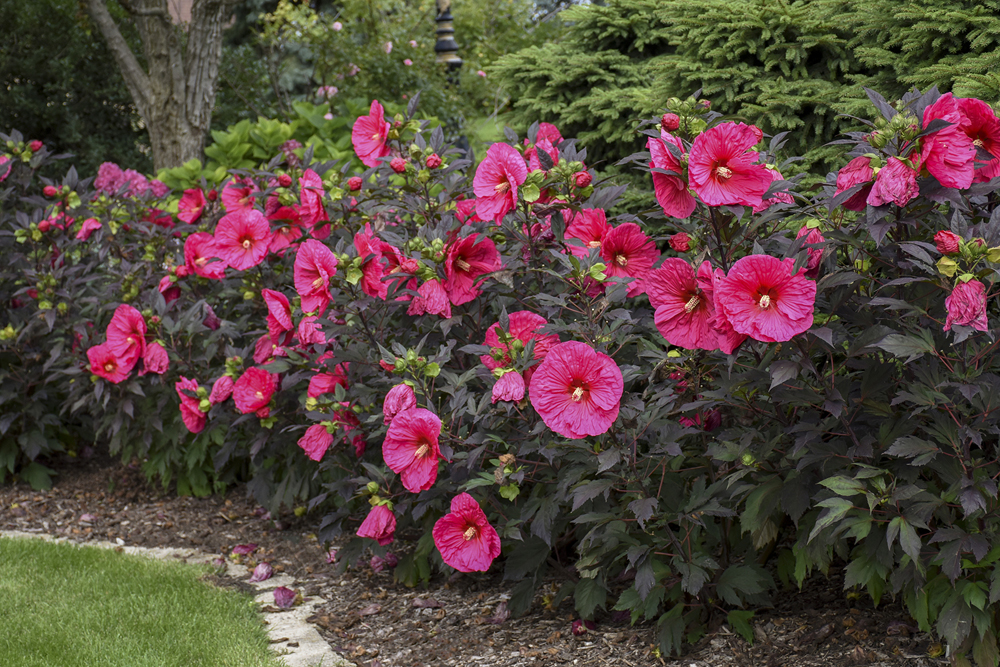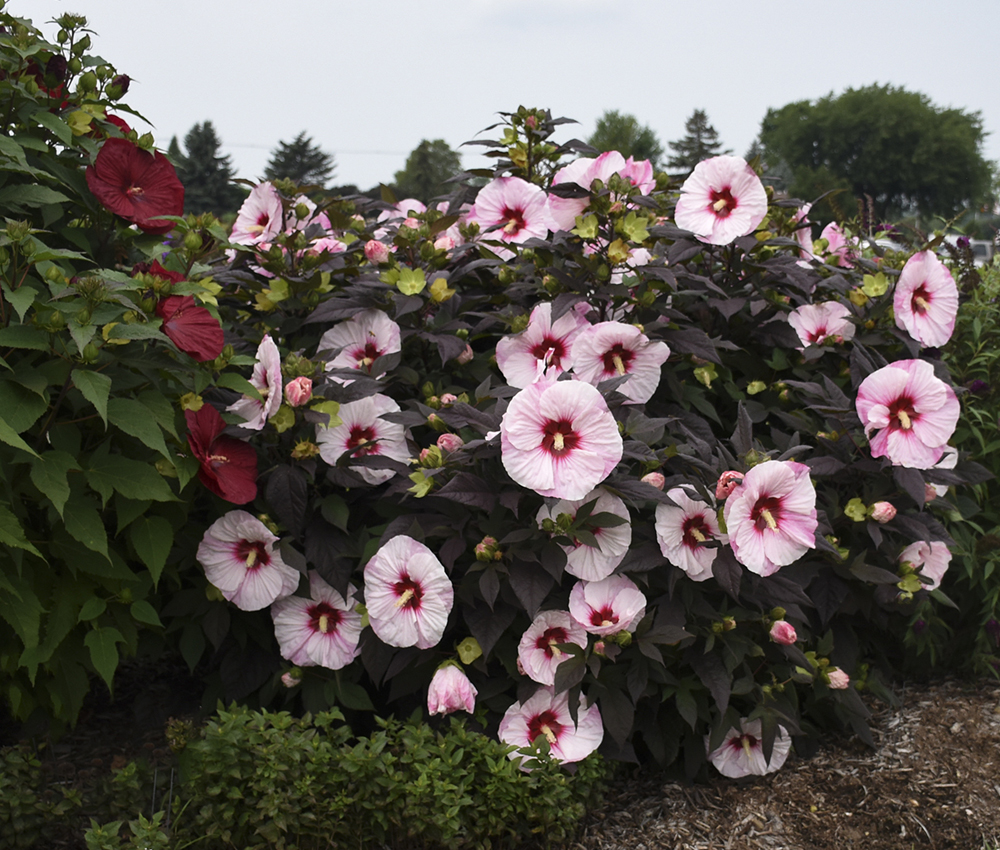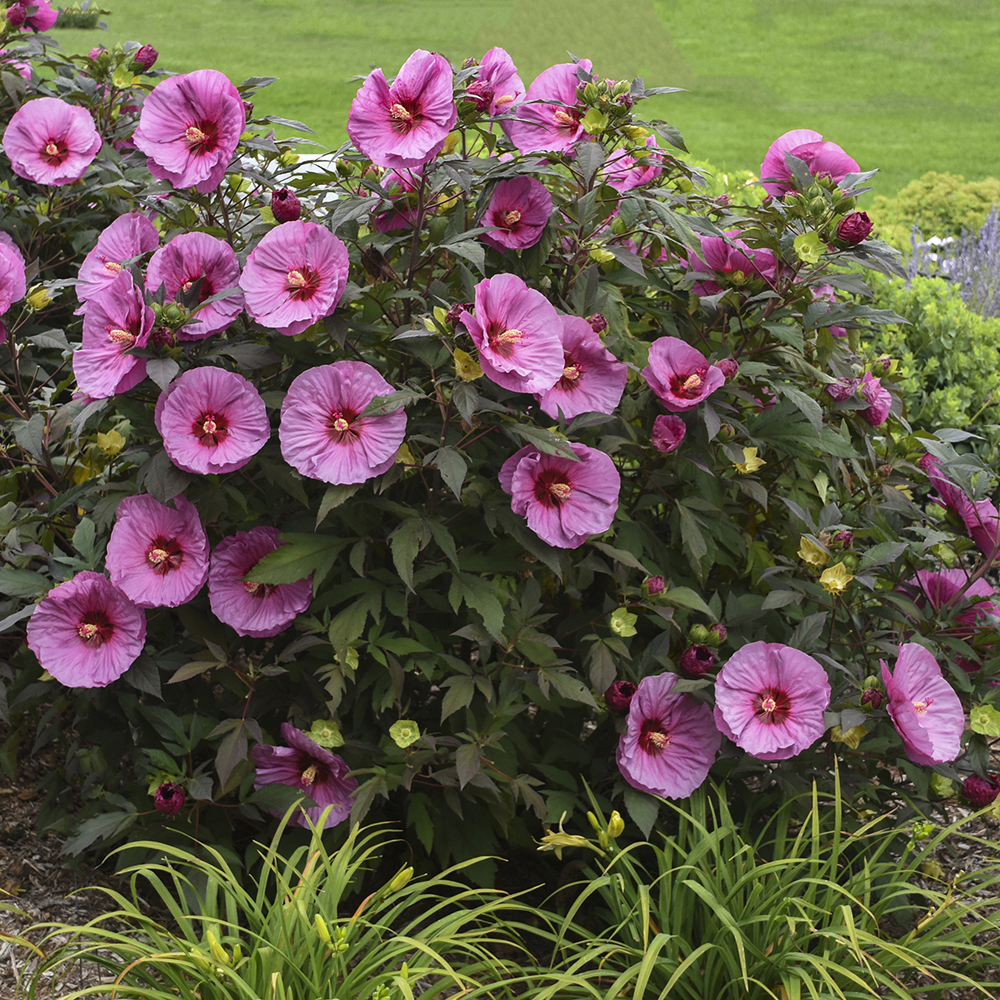5 Tips for Growing Summerific Hibiscus
Have you seen the dinner plate-sized Hibiscus blooming around town this summer? They are easier to grow than you might think, even if you live someplace with very cold winters. Here are five helpful tips for growing your own glorious Summerific® Hibiscus.

Even if you’ve never gardened before, you’ve probably heard the name Hibiscus. It’s the iconic flower of the tropics with its image splashed across Hawaiian print shirts and beach blankets everywhere. There are many different kinds of Hibiscus. The kind we are describing here is perennial Hibiscus, commonly known as rose mallow or “dinner plate hibiscus” because of its huge 7-9 inch wide blooms.
Even though it looks like a tropical plant, rose mallow can withstand winters as cold as zone 4 (-20°F to -30°F) which extends as far north as Minnesota and as warm as zone 9 (20°F -30°F) in hot climates like Florida. It’s amazing that something with such tropical flair is completely hardy outdoors in climates that see snow for three months in a row.
The Summerific® Hibiscus collection was developed by our plant breeders in zone 5b Michigan. Despite their cold weather origin, these plants deliver outstanding garden performance in warm climates like Texas and California, too.
If you only do your plant shopping in spring, you probably missed the rose mallow. Retailers stock it from summer into fall every year, which means if you head to your local garden center this weekend, you’re likely to find it. But before you shop, consider these five tips.
1. Know what to look for when you shop.
If you’re growing an older variety of rose mallow, it might only produce flower buds at the tips of the branches like frosting on a cupcake. Since the flowers each last only one day and there are fewer flower buds, older varieties usually bloom for just a few weeks.
Newer varieties like those in the Summerific line have flower buds all up and down the stems, not just at the top. As a result, you’ll have flowers all over the plant for about three times longer than older varieties. When you’re shopping for rose mallow, read the plant labels to look for words like “blooms for months” to indicate that it is a newer variety with a longer bloom time.
One other thing to know about dark-leafed rose mallow is that the foliage may not look as dark as it shows on the plant label if you buy it from an indoor greenhouse. The plant needs direct sunlight to develop those dark purple pigments in the leaves. There’s no need to worry! Once you get it home and planted in your sunny garden, the dark color will quickly develop.
2. Rose mallow needs water, water and more water.
The most important thing rose mallow needs to survive is water, and lots of it. Some of the native species of Hibiscus can actually grow in standing water. Plant yours in a spot that the hose or sprinklers will reach on a regular basis. Whether your soil consists of clay, sand or something in between, do not let this plant wilt and dry out. You’ll know it is not getting enough water if it becomes droopy and drops its lower leaves and flower buds.
3. Give this perennial lots of elbow room.
Rose mallow is a very robust perennial that fills a lot of space in the garden. Even varieties that are considered “dwarf” grow at least three feet tall and wide, with standard-sized rose mallow growing 4-6 feet tall and wide. Find a place in your landscape where it will not be crowded by other plants, because it will quickly outcompete your other perennials for space within a year or two. It is best to find a permanent spot the first time you plant it to avoid the need for transplanting later. Do not prune it to keep it smaller, as this will remove the flower buds.
4. Bring on the sun.
The best place to plant rose mallow is where the sun shines all day long, even if you garden in a warm climate. If you live in the North, full sun (6+ hours) is imperative. This plant loves hot, humid, sunny weather. You’ll also get more flowers if you grow it in full sun. If your only option is a spot in part shade, it will grow there but it will produce fewer flowers and varieties with purple foliage will appear more green.
5. Cut back rose mallow in the spring.
When all of the other perennials in your garden start to show signs of life in early spring, don’t be worried that your rose mallow is still fast asleep. It is always one of the last plants to come up, even in warm climates. But you’ll be pleasantly surprised that once it wakes up, it will grow about an inch a day.
Before you see the new foliage appear in spring (as late as early June in the North), take a strong pair of loppers or a hand saw to cut down all of the woody stems to about 6 inches tall. The new growth will appear from the base of the plant, not on those brown stems, so it’s a good idea to remove them to make way for the new foliage.
Once the new growth appears, the plant will be ready for some breakfast, so sprinkle some slow release plant food like Plant-tone® around the root zone. Then, give it some water-soluble plant food in early summer just as its flower buds are beginning to form to help the plant have extra energy to produce lots of flowers.
Want to see more? Explore our whole collection of Summerific® Hibiscus here.
Have a Summerific Kind of Week!
Join us for Summerific Week, August 2-8, 2021! Share pictures of your Summerific Hibiscus on Facebook and Instagram and tag them with #summerificweek on those days. Then, search the hashtag to see these beauties blooming around the world.







